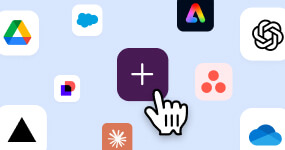According to a 2019 Workforce poll, nearly 60% of companies don’t have a long-term strategy when it comes to internal communications. Enabling effective collaboration can help you develop and differentiate an advantage, which is crucial in such a competitive business landscape. Here’s why asynchronous collaboration needs to be part of your communication strategy.
Why it’s critical to embrace and enable asynchronous collaboration
As opposed to synchronous collaboration where communication happens “in sync,” asynchronous collaboration doesn’t happen in real time. You share the information when you have it, and recipients review and respond when they’re ready.
Embracing and enabling asynchronous collaboration is more important than ever in a workforce driven by remote work. Gallup’s recent employment trends update found that 45% of full-time U.S. employees worked remotely either all (25%) or some of the time (20%) in September 2021. With nearly half of the workforce in some sort of fully remote or hybrid working model, organizations need ways to keep their teams connected without increasing burnout from having to always be online.
Asynchronous collaboration is a powerful way to do that.
Asynchronous meetings are great for teams working across time zones, allowing for face-to-face communication without having to coordinate across busy schedules and varied working hours. Plus, by reducing the number of live meetings, employees can free up time to focus on their jobs and innovation to move your business forward.
Asynchronous communication also simplifies and streamlines documentation. You can play videos back and use chat and file-sharing platforms to create a searchable archive of documents, status updates, project briefs and more. It’s much easier than assigning a team member to take notes, then waiting for them to upload, distribute and condense feedback for the group in addition to their other jobs tasks.

5 ways to enable asynchronous collaboration
1. Implement the right communication tools
Asynchronous collaboration can happen through instant messaging, email, audio and video. Providing tools that bring all those platforms together lets people focus on actually collaborating rather than switching tabs and applications. Slack is an all-in-one hub for communication and collaboration, empowering employees to come together through direct messaging, channels, huddles and more.
2. Embrace video
Everyone remembers those early pandemic times, spending entire workdays in front of the camera on video calls. Asynchronous video communication can help reduce Zoom fatigue by allowing team members to watch recorded video content on their own time. This makes brainstorming and collaboration less draining and more productive. Slack’s collaboration features for voice, video and screen recordings can be shared directly within channels.
3. Build company culture
When all your employees aren’t working from your office, use asynchronous channels to supplement in-person conversations by collaborating and building relationships in real time. Employees can send a quick status update through Slack, share a video recap of their latest proposal or send an audio clip of feedback rather than having to type out lengthy notes. You can also create social channels for both work and common interests for rapport-building, like #petpics or #pickleballfans.
4. Don’t overlook cybersecurity
Having a fully remote or hybrid workforce can create security vulnerabilities. So it’s critical to ensure employees send audio and video recordings or files back and forth securely. That’s why Slack encrypts data both at rest and in transit, has network security and server hardening, administrative access control, system monitoring and automatic alerts.
5. Leverage asynchronous collaboration as an onboarding tool
When you have a new employee join the team, they might be hesitant to speak up during a meeting or throw out an idea during a brainstorming session at first. They’ll probably also need time to review documents or search through email chains to get caught up on your processes and project statuses. One of the biggest advantages of asynchronous collaboration is that it creates an archive of conversations that new hires can use to get up to speed more efficiently. With Slack, you can search conversations by keywords or pin important files to a channel, making it easier for new hires (and everybody else, for that matter) to find what they need quickly.
Get more ideas for boosting your team collaboration from Slack.






